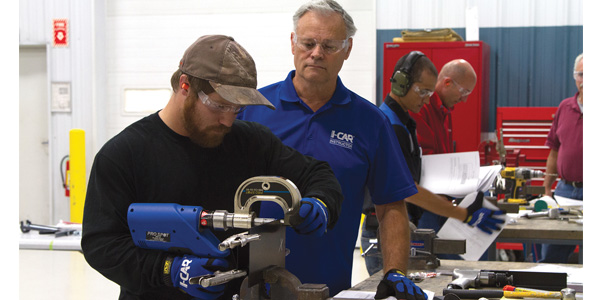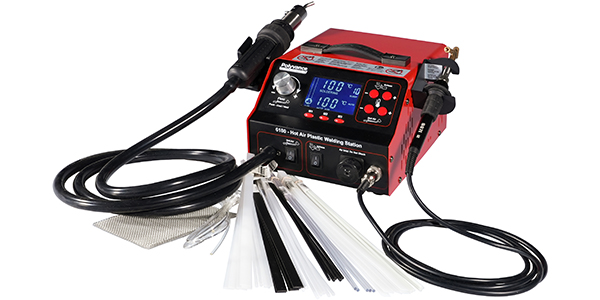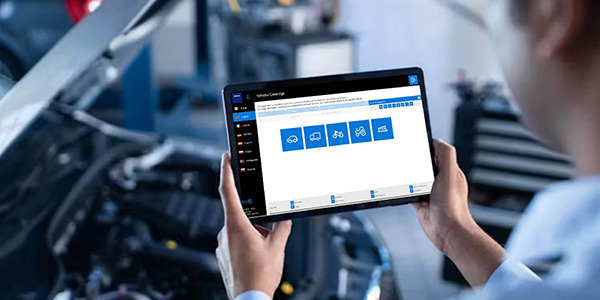
Some who have been in this industry long enough remember the old way of writing an estimate. You took out your estimate sheet and walked around the vehicle and wrote down what you saw. Then you grabbed the crash books and started looking parts up. The good ol’ days of pencils and books.
Today, we have computerized estimating to make our jobs faster and easier. That is all a matter of opinion.
Things have changed in our industry. More changes are coming. It used to be that an estimator could write the estimate and send it to the technician and start the wheels rolling. When cycle time became the industry’s sole focus, that scenario changed. But that’s just a small part of the transformation aimed at improving the collision repair industry.
Preparing to Repair
Today, we’ve changed the way we approach repairs, but also we need to change how we prepare to repair the vehicle. Much more thought needs to be put into the estimate and repair process. The days of fixing the common dent are rapidly becoming an exercise in planning and process. The term disassembly would be better called “dissecting,” or researching in depth.
We still need to disassemble the vehicle physically, but we need to get into the vehicle information and OE repair recommendations to understand what we’re dealing with. You know the old proverb on assuming. A “simple repair” is a term no longer associated with new vehicles.
What’s Changing?
Let’s look at some obvious changes:
- Steels are stronger but much thinner.
- The use of aluminum in panels and structures is growing.
- Plastics are getting bigger with more complex surfaces.
- R&I’s are becoming more common and complex.
- Glass R&I’s are becoming more common than ever.
- Electronics are increasing at an unfathomable rate.
Many of these will overlap as electronics are changing the face of collision repair, even as you read this.
A collision repair today takes much more than it did two years ago – and not just the repair but researching the procedures. Let’s look at just the dent repair. Repairing a dent in steel in the past was pretty straightforward, as it was most likely mild steel. It had a lower carbon content, and since the metal was thick, the memory of the steel was good. As steels got thinner and stronger, memory started to change. In vehicles today, the metal is so thin that it will “pop can” or “oil can” quickly. The thinness and work hardening conspire against the technician trying to remove the dent, so much so that the removal becomes almost an art form.
In dissecting the vehicle, you find that the panel you’re working on is made of high-strength steel. Now, the repair becomes a replacement of the part. But wait. Are there overlapping parts that need to be removed? Because of the thinness of the metal, can they be saved? What type of welds must be used? What wire must be used? For example, Honda requires a specific wire for MIG/MAG welding and MIG brazing. These all need to be researched.
Sectioning
Sectioning is an interesting topic today. First, the old general sectioning procedures are no longer applicable for today’s vehicles. There are lots of courses technicians and estimators can take on this subject, I-CAR’s SPS07 being a great start. With steels having changed and the use of tailor-rolled blanks and tailor-welded blanks, we do not know where the steel transitions. Plus, there are fewer weld joints. As an I-CAR instructor, I follow the rule that if sectioning procedures are available, follow them explicitly. If none are available, section according to the part provided from the manufacturer or at factory seams.
The problem with that statement is that partial replacement on some inner structures on vehicles such as new Hondas is not accepted. The D-ring of the front door must be replaced as a whole assembly. Without accessing the information needed, how would a technician know this? Why do most manufacturers limit or not allow inner structure sectioning? The point is, what are you dealing with? How do you repair it unless you look it up? You may not know.
So you’re looking at the damage and wondering what it’s made of. Is the hood steel or aluminum? Is the radiator support steel or magnesium? Maybe it’s plastic? You really can’t tell by a simple glance; you need to do a thorough inspection. Your estimating system will identify what is not obvious to the eye. What does it say on the repair? Does it identify what series the aluminum is? Does your technician have the right wire if the aluminum is to be welded? Identifying the type of aluminum is key to proper repair or replace decisions. Ford, Honda and others do not make exactly the same aluminum. What a technician or shop needs in order to do aluminum repair is a whole other article for another day.
Plastics » Plastics are getting bigger and more complex in shape and size. Identifying plastic parts is pretty straight foreword, but repair just became a problem. Some automakers are very specific on where a bumper cover can be repaired or not. One goes so far as to say no aftermarket bumper covers can be used, as their thickness is in question. The problem lies with the sensors for the new advanced driver-assist systems (ADAS). ADAS uses a series of sensors, radar and cameras to function. Repairs on or near these sensors can render them non-functional. No longer is a bumper repair a standard procedure.
Carbon Fiber
As carbon fiber enters the market, the collision repair industry will need to add that to its arsenal of knowledge. Currently, most shops are very limited on what can be repaired, so replacement is mostly the norm. The new class from I-CAR is a great one to learn about the “flying doctors of carbon fiber repair.”
Hybrid Construction
Hybrid construction will increase in newer cars. The push for lighter vehicles is changing the way we look at vehicles. A vehicle can have steel rivet bonded to aluminum or aluminum to steel. Either way, we will see new combinations. A magnesium shell with an aluminum skin has been around on doors for a while now. Know what you’re dealing with, and be sure the technician knows what he has to do. Please be sure all have proper training.
Electronics
If I haven’t stressed looking up information and researching the vehicle you’re about to repair enough, I want you to really take notice of the electronics.
There is so much talk on pre- and post-repair scanning of vehicles. We’ve talked about how important it is to look up procedures for a vehicle’s metals and plastics, but it’s also important to look up the required electronics procedures after repairs.
Look for the recalibration statements. A recalibration is not the same as scans. A recalibration is the aiming of the sensors. A scan will tell you if your system is operational. A recalibration aims the sensors to work correctly. You can argue all you want if a scan is needed or not, but a recalibration is required. It is not optional. If you don’t look up this information, you could be taking on a serious amount of liability. This alone should make you want to research and dissect that vehicle.
Summary
Generalizations can be very dangerous in this industry today. Sometimes we don’t know what we don’t know. Don’t get frustrated, as we all are learning new things and procedures. It’s a part of change.
I read a proverb somewhere that reminded me of what’s going on in the collision repair industry: “With great change comes chaos.” I don’t know who to credit for that, but I do know one thing: welcome to chaos! But this I promise to you: It will get better. We will all learn and adapt and persevere. It’s what makes America great.













